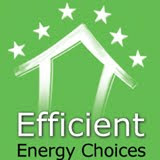As most of you have heard, last month the Clean Energy Bill 2011 which includes the introduction of Carbon Price, was passed in the Senate. The Clean Energy Bill is driving towards reducing Australia’s carbon emissions by 5% by the year 2020. The Clean Energy Bill will put an initial price of $23 per tonne of carbon (or equivalent greenhouse gases) emitted into the atmosphere from July next year. The initial price will increase by CPI to June 2015. From July 2015, the Carbon Price will float and the system will become an Emission Trading Scheme (ETS). The Carbon Price will vary dependent on the market from $15 and greater per tonne. This Clean Energy Bill will affect companies emitting over 125,000 tonnes of emission. ETS has already been introduced in Europe, and it’s on its way to being introduced in the USA, Canada and in Asia.
How will this affect householders?
Not directly. But indirectly through large carbon emitters who will be passing down their costs to consumers and householders. For example: the large electricity generators (i.e. Hazelwood, Loyang, etc...) will pay for their pollution, they will pass Carbon Price to the utility distributers (i.e. AGL, Red Energy, etc...). Then the utility distributers will pass it onto households.
The Carbon Price could also affect large industries, manufacturers, retailers, developers, etc... who will also be passing it onto consumers. The estimated Carbon Price per household could be approximately $500 per year. The basic motto is: “if you pollute, you pay”.
Study on Carbon Price for efficient and inefficient dwellings
I conducted a study to assess the energy efficiency, the CO2 emissions, the estimated Carbon Price and the estimated energy bills (electricity and gas) of 4 typical Australian dwellings. The size of each typical dwelling is approximately 190m2. Refer to below Table.
1. 3-star efficiency dwelling: typical Australian dwelling with inefficient lighting, airconditioning units, appliances and hot water system.
2. 5-star efficiency dwelling: reasonable efficient lighting, airconditioning units, appliances and hot water system.
3. 6-star efficiency dwelling: efficient lighting the new BCA Section 3.12.5.5. Airconditioning units, appliances and hot water system.
4. 7-star efficiency dwelling: LED lighting, above average efficiency for airconditioning units, appliances and solar gas boosted hot water system.
As you can see from the figures, that the more energy efficient the dwelling, the less Carbon Price will be paid and vice versa. |
These figures may be out by a third, based on government charges, different utility charges and operation by dwelling occupants. |
These figures are for usage only. They do not include service and maintenance charges. Fossil fuel prices have significantly increased over the last 5 – 10 years and will continue to significantly increase in the future. It would most definitely be advisable to increase dwelling’s energy efficiency including appliances and lighting. |
Seven simple ways of increasing energy efficiency for your dwelling
1. Change behaviour. Be more efficient with appliances, lighting, computers, TVs, etc...
2. Install insulation where possible. Roof and floor insulation can make a huge difference.
3. Install energy efficient lighting such as: LEDs and compact fluorescent.
4. Have timers at home to automatically switch off some electrical items when not used.
5. Have an onsite generator such as: solar panels for electricity or solar hot water. Solar hot water can save you up to seven months of gas bills.
6. Install draft stoppers at external doors.
7. Seal gaps and cracks.
More on these topics to follow next year....
Stay tuned!








